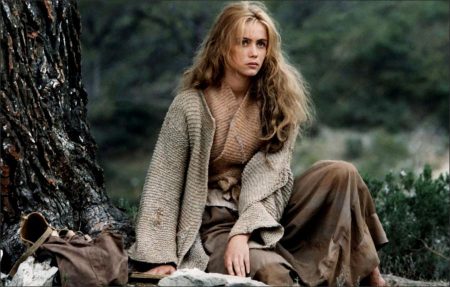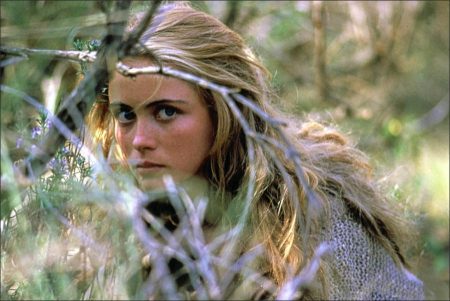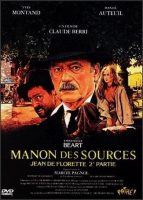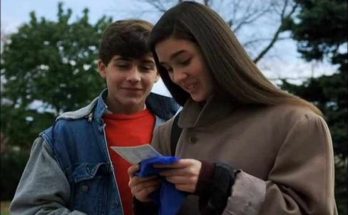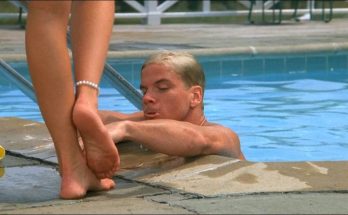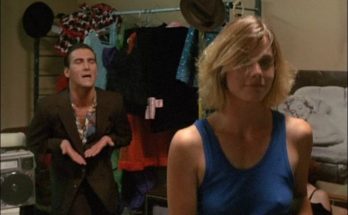Manon des SourcesManon des Sources follows the events of Jean de Florette, Manon, the daughter of Jean, is living in the countryside of Provence near Les Romarins, the farm that her father once owned. She has taken up residence with an elderly Piedmontese squatter couple who teach her to live off the land, tending to a herd of goats and hunting for birds and rabbits. Ugolin Soubeyran, also called Galinette (only by his uncle César), has begun a successful business growing carnations at Les Romarins with his uncle, César Soubeyran—also known as Papet—thanks to the water provided by the spring there.
After seeing her bathe nude in the mountains, Ugolin develops an interest in Manon. When he approaches her, she seems disgusted by his vileness and almost certainly by the memory of his involvement in her father’s downfall. But Ugolin’s interest in Manon becomes obsessive, culminating in sewing a ribbon from her hair onto his chest.
At the same time, Manon becomes interested in Bernard, a handsome and educated schoolteacher recently arrived in the village. As a small child, Manon had suffered the loss of her father, who died from a blow to the head while using explosives in an attempt to find the water source. César and Ugolin then bought the farm cheaply from his widow—Manon’s mother—and unblocked the spring. Manon witnessed this as a child. The two men profited directly from his death.
When she overhears two villagers talking about it, Manon realises that many in the village knew of the crime but had remained silent, for the Soubeyran family was locally important. While searching for a goat that fell into a crevice above the village, Manon finds the underground source of the spring that supplies water to the local farms and village. To take her revenge on both the Soubeyrans and the villagers, who knew but did nothing, she stops the flow of water using the iron-oxide clay and rocks found nearby.
The villagers quickly become desperate for water to feed their crops and run their businesses. They come to believe that the water flow had been stopped by some Providence to punish the injustice committed against Jean. Manon publicly accuses César and Ugolin, and the villagers admit their own complicity in the persecution of Jean. They had never accepted him, as he was an outsider and was physically deformed.
César tries to evade the accusations, but an eye-witness, a poacher who was trespassing on the vacant property at the time, steps forward to confirm the crime, shaming both César and Ugolin. Ugolin makes a desperate attempt to ask Manon for her hand in marriage, but she rejects him. The Soubeyrans flee in disgrace. Rejected by Manon, Ugolin commits suicide by hanging himself from a tree, apparently ending the Soubeyran line.
Manon des Sources; released in North America as Manon of the Spring) is a critically acclaimed and commercially successful 1986 French language film. Directed by Claude Berri, it is the second of two films adapted from the 1966 two-volume novel by Marcel Pagnol, who wrote it based on his own earlier film of the same title. It is the sequel to Jean de Florette.
Manon des Sources (1986)
Directed by: Claude Berri
Starring: Yves Montand, Emmanuelle Béart, Daniel Auteuil, Hippolyte Girardot, Margarita Lozano, Yvonne Gamy, Ticky Holgado, Elisabeth Depardieu, Gabriel Bacquier
Screenplay by: Claude Berri, Gérard Brach
Production Design by: Bernard Vézat
Cinematography by: Bruno Nuytten
Film Editing by: Hervé de Luze, Costume Design by:
Set Decoration by: Sylvie Gautrelet
Art Direction by: Olivier Coutagne, François Dariani, François Bariani
Music by: Jean-Claude Petit
Distributed by: Orion Classics
Release Date: November 19, 1986
Views: 427
